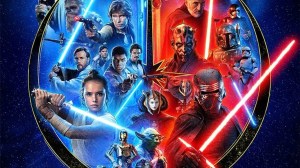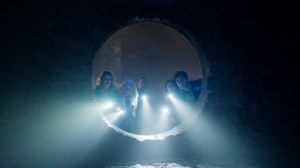There are very few games that Nintendo has released over the past 20 years that are better than Super Mario Galaxy and Super Mario Galaxy 2. This pair of intergalactic Super Mario games represents high points in Nintendo’s platforming genre that arguably haven’t been surpassed since. Nintendo seems to know this as well, as it’s basing The Super Mario Bros. Movie sequel on the world and stylings of the Super Mario Galaxy games. To coincide with this renewed focus on Super Mario Galaxy, both games have now been brought to Switch and Switch 2 consoles to make them easier to access than ever.
Videos by ComicBook.com
While I had concerns coming into revisiting the Mario Galaxy series that they would start to feel their age (as many Wii games now have), I have instead been left floored by how gratifying and lively this duology still is. Even with very little new to warrant a purchase, Super Mario Galaxy + Super Mario Galaxy 2 remain must-play games, especially for those who have never experienced either title before.
Rating: 4.5/5
| Pros | Cons |
|---|---|
| Both games hold up incredibly well | No new content of note |
| Visual upgrades are modest yet welcome | Price can be seen as steep |
| Dozens upon dozens of hours of gameplay included | |
| This is the platforming genre at its best |
Super Mario Galaxy Gets Just a Slight Visual Upgrade
For the most part, Super Mario Galaxy + Super Mario Galaxy 2 is a pretty straightforward release from Nintendo. These are largely ports of both games and not remasters or remakes, which means that Nintendo hasn’t really touched either title up too much. Each game runs at 1080p on Nintendo Switch, while the Nintendo Switch 2 version is capable of hitting 4K. I played this collection on Switch 2 and was left impressed by the clarity and vibrant array of colors seen across each entry. This is easily the best that Super Mario Galaxy and Super Mario Galaxy 2 have ever looked.
Because these are primarily just games in which Nintendo has improved the fidelity, though, it does expose the age of each just a bit. Textures, in particular, now look a bit more muddied at times, specifically when it comes to character models. There’s a noticeable dip in quality when compared to Mario’s appearance in a game like Super Mario Odyssey, for instance.
Even with this caveat, these slight visual drawbacks are only really noticeable during cutscenes. Gameplay looks excellent at all times and is combined with a level of performance that was consistent and never wavered. Again, given that these aren’t proper remasters, I think this is about all you could expect from Super Mario Galaxy + Super Mario Galaxy, so in that case, Nintendo didn’t drop the ball.
Both Super Mario Galaxy Games Still Feel Fresh in 2025

The thing that has surprised me the most about Super Mario Galaxy + Super Mario Galaxy 2 is just how unique they each still feel. Nintendo could have released either of these titles for the first time ever in 2025 and they each wouldn’t have felt mired in dated gameplay mechanics or design. These truly feel like timeless games and show just how ahead of the curve Nintendo was when it released the first Super Mario Galaxy in 2007.
Aside from having stellar core platforming controls, each Super Mario Galaxy game excels in the way that it mixes things up from level to level. One moment you’ll be controlling Mario as a Bee, floating between platforms and dodging enemy attacks. The next you’ll be riding on the back of Yoshi, hurtling through an obstacle-course style level that requires fine precision in order to grab the Power Star that sits at its end.
When it comes to sheer variety, the Super Mario Galaxy games are unmatched. There are countless power-ups and ingeniously designed levels that keep you on your toes. It’s almost impossible to get bored when playing these games, which is something that many other AAA titles cannot boast.
Premium Price and Lack of New Content Could Make This a Hard Sell

Perhaps the most difficult thing to quantify with this release is whether or not the amount that Nintendo is charging for this package is worth it. The bundled version of Super Mario Galaxy + Super Mario Galaxy 2 is retailing for $70, which is a premium price that we’ve come to expect from Nintendo. While many other publishers might charge less for a simple port to new consoles, this isn’t true for Nintendo. Still, given the sheer enjoyment that can be found in both games, $70 more or less still feels like a steal. And, fortunately, for those who already own Super Mario Galaxy by way of the delisted Super Mario 3D All-Stars collection, Super Mario Galaxy 2 can be purchased on its own through the eShop for $40.
This steeper cost for the bundle is also paired with the fact that there’s really nothing new included that wasn’t found in the original games. Nintendo has added an additional storybook chapter to Super Mario Galaxy that further fleshes out the backstory of Rosalina, while also adding a wholly new storybook to Super Mario Galaxy 2. This, along with the implementation of “Assist Mode,” which is meant to make the game a bit easier for those not skilled at platformers, is about all that Nintendo has folded in to make this release different than those on Wii.
At the end of the day, the best thing that can be said about this entire release is simply that it exists. With Super Mario Galaxy previously locked behind the aforementioned Super Mario 3D All-Stars and Super Mario Galaxy 2 still gridlocked to Wii (and technically Wii U), it has become increasingly hard to play this series as time has gone on. Nintendo has now omitted one of its gravest sins by bringing Super Mario Galaxy and Super Mario Galaxy 2 to Switch consoles, and with the movie set to hit theaters next spring, this release couldn’t have come at a better time.
ComicBook reviewed Super Mario Galaxy + Super Mario Galaxy 2 on the Nintendo Switch 2.









